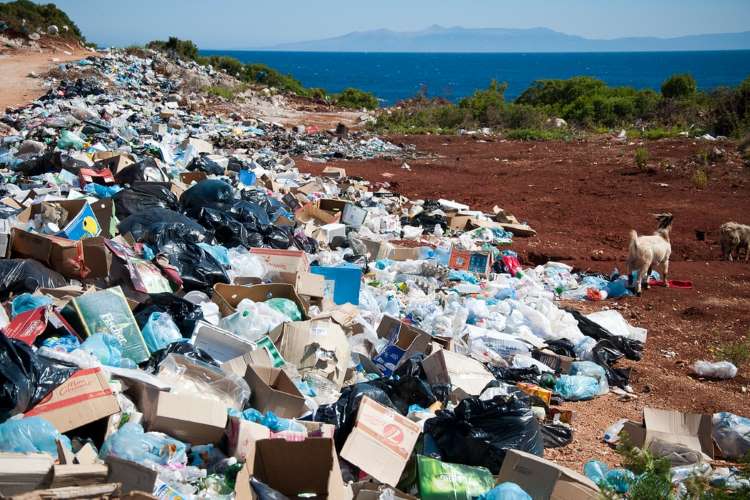
Plastic pollution is one of the biggest contributors to the degradation of the environment. Despite wide awareness about the problems it can cause, production of plastic saw a 100% increase in the last 20 years. Much of the production is of single-use plastic, resulting in a massive increase in plastic waste. Most of this plastic waste is dumped into landfills or water bodies. The plastic dumped into water bodies eventually ends up in oceans. It is estimated that 11 million tonnes of plastic end up in the oceans every year.
A recent study by World Wildlife Fund has estimated that the lifetime cost of the plastic output in 2019 would be around $3.7 trillion, more than the GDP of most nations. However, absence of data makes it difficult to estimate the actual cost the negative impact of plastic. The estimates and forecasts are likely to be much lower the full lifecycle cost of plastic.
Environmentalists, governments and international organisations are making efforts to spread awareness about plastic pollution on the environment. There have been summits called by international organisations and protests orchestrated by civilians across the world, seeking curbs on plastic pollution. Researchers are working hard to develop environment-friendly alternatives to plastic products. The type of plastic products that is most harmful to the ecosystem is single-use plastic. While the disadvantages of using these are known to all, alternatives are widely disregarded by consumers.
READ I ESG reporting: Climate change, state emergency and stakeholder pursuit
Cost factor behind plastic pollution
There are many reasons why eco-friendly alternatives for plastic products are not widely manufactured and in use. The main reason is the higher cost of alternative products. Most alternatives require more effort and resources to manufacture than plastic products and, therefore, cost more. The average buyer is unwilling to pay extra for these alternatives. Due to lack of demand of these alternatives, very few enterprises manufacture them.
Another reason why there are few takers for eco-friendly products is simply the consumer’s indifference. Despite the efforts of environmentalists, many people think that plastic pollution doesn’t concern them. Despite all the efforts and resources spent, this unfortunate mindset doesn’t seem to be changing.
What needs to be done to popularise the use of environment-friendly alternatives to single-use plastic products? As mindsets take ages to change, one must focus on popularising the concept of eco-friendly products without relying on the consensus of the general public. There are numerous ways to do this, and most require the governments to legislate to curb the production of single-use plastics. Single-use plastics have to be decisively banned. Corporations that benefit economically from the manufacture of single-use plastics will find loopholes in regulations no matter how strict they may be.
World powers need to come together and impose bans collectively to emphasise the importance of the issue. If the world nations fail to take action, plastic production will increase significantly, increasing the cost of pollution. The WWF estimates that the societal lifecycle cost of the virgin plastic output in 2040 could be at least $7.1 trillion, more than the GDP of all nations except the United States and China.
There is clarity over the action needed to tackle plastic pollution. But world nations haven’t mustered the scale and intent needed to bring about a radical change. Regulatory action has failed to address the basic issues. The proposals towards circular economy can cut the environmental impact of plastic. However, the governments do not have the technical and financial muscle to revamp the systems.
READ I Post-Covid world: Agility, adaptability key to success of individuals, businesses
Innovation, creativity hold the key
It is also clear that global action to curb the use of plastics is not enough as a solution to the problem of plastic pollution. The manufacturers of alternatives to plastics can expand the market for their products through innovation and creativity. Businesses selling alternatives should work on making their products aesthetically appealing. Already many small businesses that sell eco-friendly products use this method. Another aspect manufacturers and sellers should focus on is innovative marketing strategies to enter the mainstream market.
The advent of social media has made this much easier for businesses as they have multiple platforms and various ways of promoting their products in a cost-effective way. Creating graphically aesthetic social media pages and posting content endorsing products in creative ways will go a long way towards popularising them. Using smart promotional techniques, they can attract many more customers, especially those belonging to younger generations.
The methods discussed above to encourage environment-friendly alternative products can work separately, but the effectiveness would be manifold if world nations also made an effort to promote them. Only a collective effort can achieve the environment goals that have to be reached.
There are proposals suggesting a global treaty of companies and financial institutions to curb marine plastic pollution. This has the potential to tackle the plastic pollution crisis by offering a framework the transition to a circular economy for plastic which could be a binding instrument that brings about accountability. For this to happen, the governments will need to begin consultations and negotiations for a formal negotiation mandate at the UN Environment Assembly early next year.
(Tara Nair is a student of the Millennium School, Noida.)
